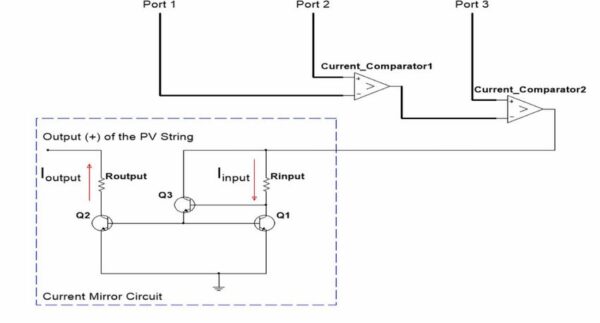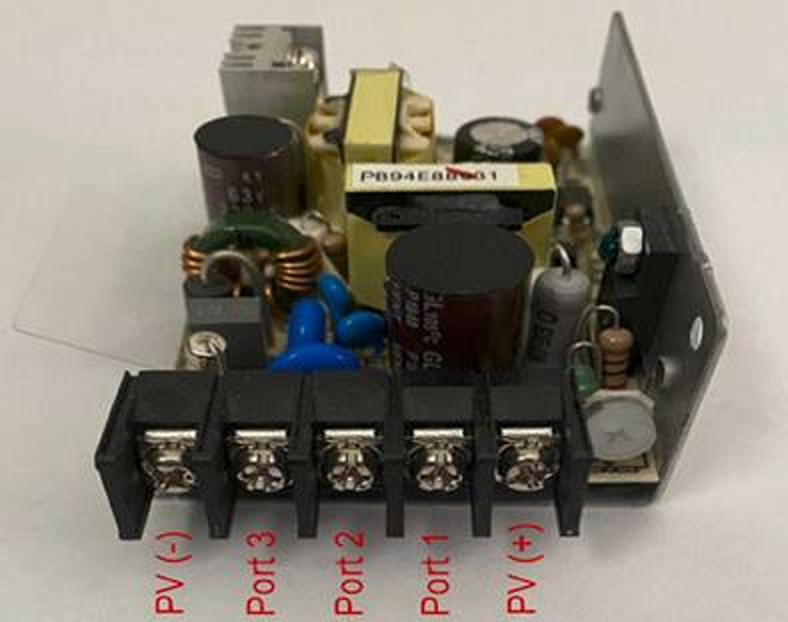An international research team has fabricated an electronic circuit that can reportedly reduce hotspot formation and increase energy yield in photovoltaic modules.
The proposed system utilizes two current comparators, two NPN transistors, and a current mirror circuit. These devices are integrated through an automatic switching mechanism, which the scientists said eliminates the need for conventional bypass diodes, as it provides a dynamic response to fluctuating thermal conditions.
In the proposed system configuration, the current comparator identifies anomalies in the current flow indicative of potential hotspots, while the current mirror circuit reacts to these anomalies by gauging the current flow. “This design allows for precise control of the input and output current via a purely resistive element, promoting a more stable and efficient operational environment for the PV module,” the researchers explained.
The current comparator operates in two stages. First, it assesses output currents from the first and second PV sub-strings. Then it juxtaposes the differential current obtained from this assessment with the last PV sub-string. The final step is described by the researchers as the critical passage ensuring homogeneous current across all sub-strings, which they said prevents the occurrence of hotspots.

Image: University of York, Optik, Creative Commons License CC BY 4.0
The electronic circuit can operate by sourcing electricity from the solar modules themselves and, according to its creators, its energy consumption is minimal.
Popular content
Through a series of validation tests exposing the circuit to high current loads, the research group found that it could ensure sufficient thermal stability within safe operating limits. “This robust performance indicates the circuit's suitability for a broad range of PV installations, from small-scale residential to large-scale industrial applications,” it explained, noting that the device lowered hotspot temperatures “significantly” from the “dangerous” 55 C threshold.
The scientists also found that using the system may result in a higher energy yield ranging from 3% to 5.35% in solar panels affected by adjacent and non-adjacent hotspots. However, they also warned that, although the system ensures a more uniform distribution of current, it is not able to correct the power losses at the site of defects.
“While the circuit significantly reduced hotspot temperatures, bringing them closer to those of healthy cells, it did not entirely normalize them,” they concluded, hinting at the current limitations of the device.
It was described in the paper “Photovoltaic hotspots: a mitigation technique and its thermal cycle,” which was recently published in Optik. The research team included scientists from the University of York in the United Kingdom, the US Department of Energy's Sandia National Laboratories, and the University of Naples Federico II in Italy.
This content is protected by copyright and may not be reused. If you want to cooperate with us and would like to reuse some of our content, please contact: editors@pv-magazine.com.



2 comments
By submitting this form you agree to pv magazine using your data for the purposes of publishing your comment.
Your personal data will only be disclosed or otherwise transmitted to third parties for the purposes of spam filtering or if this is necessary for technical maintenance of the website. Any other transfer to third parties will not take place unless this is justified on the basis of applicable data protection regulations or if pv magazine is legally obliged to do so.
You may revoke this consent at any time with effect for the future, in which case your personal data will be deleted immediately. Otherwise, your data will be deleted if pv magazine has processed your request or the purpose of data storage is fulfilled.
Further information on data privacy can be found in our Data Protection Policy.